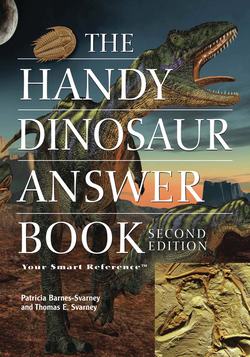Читать книгу The Handy Dinosaur Answer Book - Patricia Barnes-Svarney - Страница 36
На сайте Литреса книга снята с продажи.
When were radiometric dating techniques discovered?
ОглавлениеThe basic principles and techniques of radiometric dating were not discovered until the turn of the twentieth century. In 1896, French physicist Antoine-Henri Becquerel (1852–1908) accidentally discovered radioactivity when a photographic plate left next to some uranium-containing mineral salts blackened, proving that uranium gave off its own energy. In 1902, British physicist Lord Ernest Rutherford (1871–1937) collaborated with British chemist Frederic Soddy (1877–1966) to discover that the atoms of radioactive elements are unstable, giving off particles and decaying to more stable forms. These findings led United States chemist Bertram Borden Boltwood (1870–1927) to argue that, by knowing the decay rate of uranium and thorium into lead, the dating of rock would be possible. In 1905, Boltwood and John William Strutt dated various rocks, obtaining ages of 400 to 2,000 million years for various rock samples and proving such dating could be done.
Why do some dates differ on the various geologic time scale charts?
Determining the true age divisions of the past 4.6 billion years for the geologic time scale is not a perfect science. (Determining the date of a rock layer is not as precise as knowing your own age.) In addition, there is often disagreement as to the extent of certain time periods, since rocks and fossils found on different continents vary. Even radiometric dating does not reveal the true age of a rock or mineral because there is always a certain amount of estimation involved.
